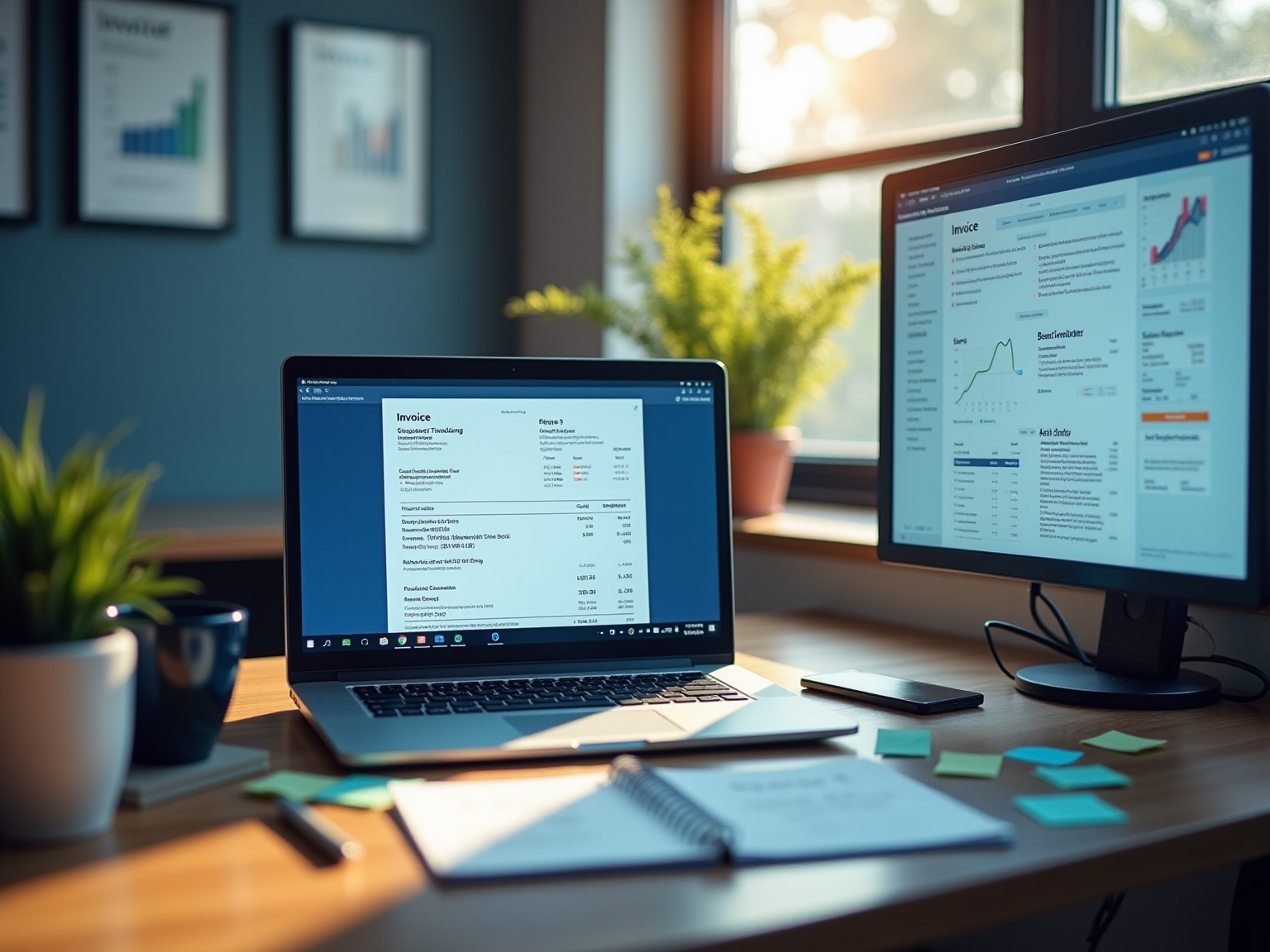Overview
The billing process represents a structured sequence that encompasses the gathering of details, the creation of invoices, the dispatching of these invoices to customers, and the tracking of payments. Automation plays a pivotal role in significantly enhancing both efficiency and accuracy. This article underscores that the implementation of automated solutions, such as Glasscubes, not only streamlines these essential tasks but also reduces processing times by up to 50% and minimizes errors. Consequently, this leads to improved cash flow and stronger client relationships for accountants.
Key Highlights:
- The billing process involves gathering details, creating invoices, sending them to customers, and tracking payments.
- 88% of finance professionals believe improved invoice management can reduce administrative burdens.
- Manual invoice processing takes an average of 14.6 days, with nearly 39% of invoices containing errors.
- Automation tools like Glasscubes can optimize invoicing through features such as automated reminders and real-time reporting.
- Automation can increase invoice processing efficiency, allowing finance teams to handle up to 30 invoices per hour.
- By 2025, a rising demand for AI solutions in invoicing is expected, with 68% of respondents interested in such technologies.
- Digitizing billing processes enhances operational efficiency and compliance, with automated software reducing response times by 50%.
- Common pitfalls in billing include inaccuracies and delays; adopting systematic approaches can mitigate these issues.
- Legal e-billing practices emphasize adherence to client payment guidelines and maintaining meticulous records.
- The integration of invoicing systems with accounting software reduces manual entry errors and improves overall efficiency.
- Future trends indicate a shift towards subscription-based services and increased reliance on AI and machine learning in invoicing.
Introduction
In the evolving landscape of accounting, the billing process emerges as a critical pillar for financial success and client satisfaction. As businesses navigate the complexities of invoicing, timely payments, and cash flow management, understanding the intricacies of billing is paramount. This article delves into the structured methodology of billing, highlighting the essential steps accountants must master to enhance efficiency and accuracy.
With a focus on automation and digital solutions, such as Glasscubes, it explores how technology can revolutionize traditional practices, streamline workflows, and ultimately foster stronger client relationships. From recognizing common pitfalls to embracing future trends, this comprehensive overview equips accountants with the insights needed to thrive in an increasingly digital world.
Understanding the Billing Process: An Overview
The invoicing system represents a structured approach that encompasses the generation and delivery of invoices to customers for services rendered or products supplied. This function is critical in accounting, ensuring that businesses receive payments promptly, which is vital for sustaining healthy cash flow. The billing process typically involves several essential stages:
- Gathering billing details
- Creating invoices
- Sending them to customers
- Tracking payment statuses
Understanding the billing process is crucial for accountants, as it significantly impacts both financial stability and client relationships. Recent statistics indicate that 88% of finance professionals believe that improving invoice management could free their teams from administrative burdens, enabling them to concentrate on more strategic tasks. Moreover, the average time required to process an invoice manually is a staggering 14.6 days, with nearly 39% of invoices containing errors.
This underscores the pressing need for enhanced automation and efficiency in accounts payable activities, as illustrated by the case study titled ‘Cost, Time, and Errors in Handling Invoices,’ which highlights the deficiencies of manual processing.
With Glasscubes, accountants can optimize their invoicing activities through features such as automated reminders, real-time reporting, and digital file approval. These tools not only save time but also ensure timely data submission, maintaining smooth and efficient workflows. The Glasscubes client portal further enhances client engagement by allowing external clients to collaborate and approve documents seamlessly.
Specialist insights underscore the importance of a structured payment system. Shaun Jex, a Financial Automation Content Specialist, notes that while manual methods enable finance teams to process about five invoices per hour, automation can elevate this figure to an impressive 30 invoices per hour. This remarkable increase not only streamlines operations but also improves decision-making, establishing automation as a cornerstone of successful financial practices.
In 2025, trends suggest a rising demand for AI solutions to streamline invoice approval and payment authorisation, with 68% of respondents in a global survey expressing interest in such technologies. These advancements not only enhance the validation process but also incorporate fraud prevention measures, further safeguarding financial transactions. This growing interest in automation illustrates the necessity for accounting firms to adapt to current trends and refine their invoicing methods.
Establishing an effective billing process is essential for accounting firms, as it directly influences cash flow. Timely invoicing ensures that businesses can meet their financial obligations and invest in growth opportunities. By prioritising an effective invoicing system, financial professionals can foster stronger relationships with customers and contribute to the overall financial health of their organisations, utilising tools like Glasscubes to enhance customer engagement and streamline audit information collection.
The pricing for Glasscubes starts with a monthly account fee of £120, with various support packages available to accommodate different needs.
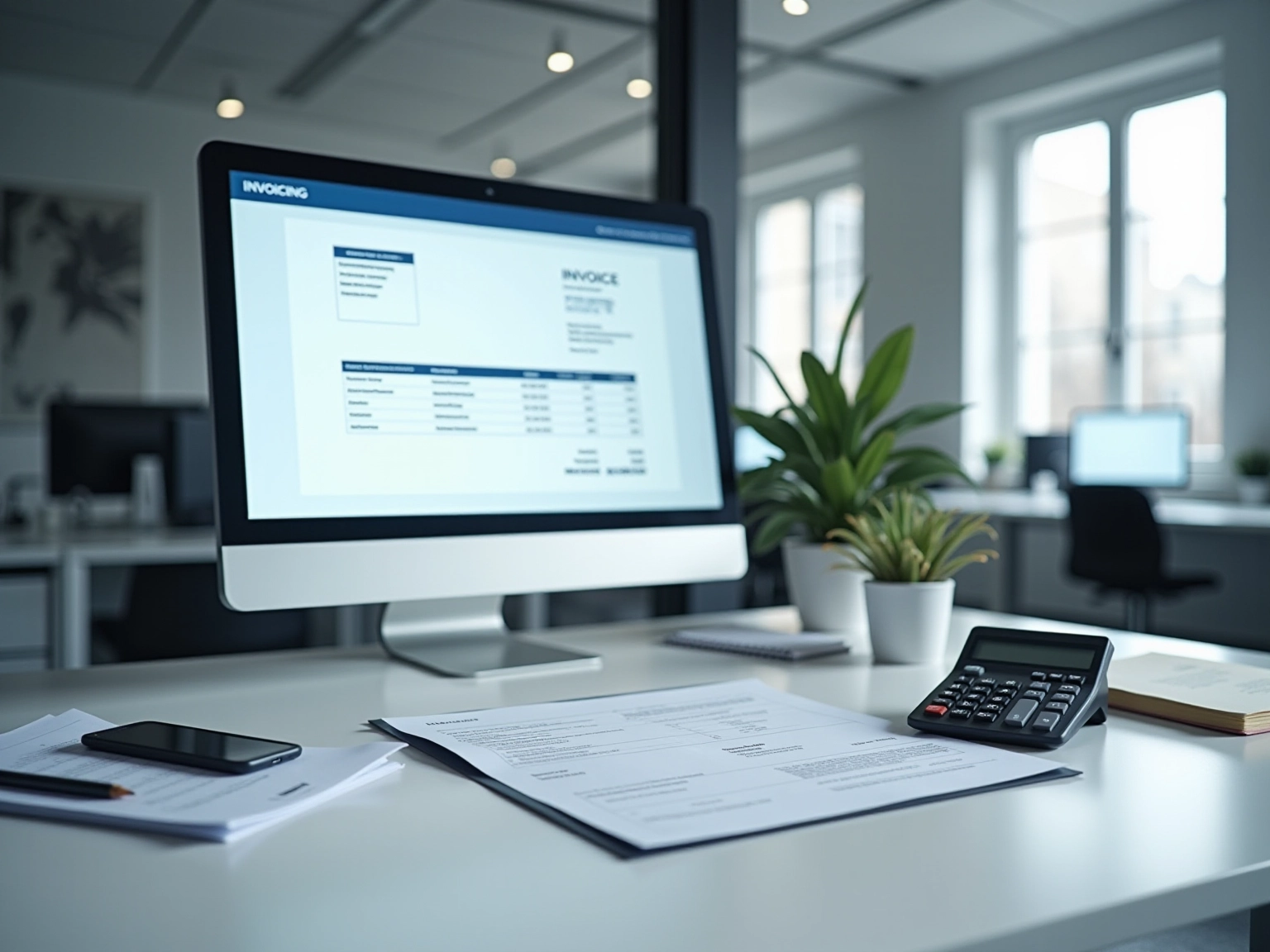
Step-by-Step Breakdown of the Billing Process
The billing process for financial professionals can be effectively streamlined by following several essential steps:
- Gathering Information: This initial step involves collecting all necessary data, including customer details, services rendered, and pricing structures. Efficient information gathering is crucial, as it sets the foundation for the billing process and ensures accurate invoicing.
- Creating the Invoice: Utilising advanced accounting software, accountants can generate professional invoices that encompass all relevant details. This not only enhances the presentation but also minimises the risk of errors that can arise from manual entry.
- Reviewing the Invoice: A thorough review of the invoice is vital to ensure accuracy. Given that 39% of invoices contain errors, as highlighted in recent analyses, this step helps prevent delays in payment and fosters trust with clients.
- Sending the Invoice: Once the invoice is finalised, it should be delivered to the customer through their preferred channels, such as email or a secure portal for users. This flexibility in communication can significantly improve customer satisfaction and response rates.
- Tracking Payments: Monitoring the status of payments is essential for timely collections. Utilising automated reminders via Glasscubes can simplify this workflow, enabling financial professionals to dispatch an unlimited number of reminders on customisable schedules. This feature not only decreases the time financial professionals spend pursuing outstanding invoices but also boosts customer interaction by enabling personalised messaging that can signal urgency for approaching deadlines.
By implementing these best practices, accounting firms can enhance the efficiency of their billing process. For instance, firms that have implemented automated invoice processing have reported significant time savings, with some users, like Sophie Montgomery from TaxAssist Accountants, noting an impressive 288 hours saved in just one tax season. Moreover, the average duration required to handle an invoice is about 14.6 days, highlighting the significance of optimising each phase in the billing process.
In 2025, accountants should concentrate on smart invoice processing and advanced automation to improve their workflows. Accounts payable departments are increasingly seeking better user interfaces and online vendor portals to streamline their operations. By utilising technology, like Glasscubes’ automated communication tools, companies can not only decrease the average time spent on invoicing but also enhance precision and client involvement, ultimately resulting in improved financial results.
Furthermore, as the area of forensic accounting expands, with experts receiving an average yearly income of £86,267, embracing sophisticated invoicing methods can prepare firms for achievement in a competitive environment.
The Importance of Digitizing Your Billing Processes
In today’s fast-paced business landscape, digitising the billing process is essential for accountants seeking to enhance operational efficiency. Automated invoicing software, such as Glasscubes, revolutionises billing by enabling the swift creation of digital invoices that can be dispatched immediately and monitored in real time. This capability streamlines operations and significantly reduces the risk of human error, leading to enhanced precision in the billing process.
The advantages of digitisation extend beyond mere efficiency; they play a crucial role in managing the billing process and cash flow. Quicker invoice processing and payment tracking empower accountants to maintain better oversight of their financial health. Moreover, digital records facilitate compliance with regulatory standards, as they are easier to manage and audit compared to traditional paper-based systems.
Recent trends indicate a growing adoption of automated billing software among accounting firms, driven by the demand for improved efficiency and customer satisfaction. Statistics reveal that firms utilising Glasscubes have experienced a remarkable 50% reduction in response times, underscoring the impact of automation on billing processes and overall operational workflows. As noted by Steve, an audit manager at MGI, the transition to Glasscubes has led to faster responses from customers, who can effortlessly upload information and monitor outstanding requests in a single secure workspace, thereby enhancing overall engagement.
Glasscubes boasts specific features such as automated reminders for clients to upload information, further streamlining the billing process and ensuring that all parties are aware of outstanding requests. The dedicated onboarding assistance provided by Glasscubes guarantees that firms can implement these systems smoothly, thereby enhancing their operational capabilities and minimising disruption during the transition.
As emphasized by Dr. Maria Cecilia Aponte, the billing process can vary significantly based on the complexity of technology, the scale of implementation, and the specific needs of the organisation. This insight underscores the importance of understanding the nuances involved in adopting automated invoicing solutions, particularly regarding the billing process and the pricing structure that accounting managers must consider.
Case studies, such as the impact of VAT e-invoicing reform in Peru, illustrate the tangible benefits of digitisation. The shift from paper to electronic invoicing improved the billing process, resulting in over a 5% increase in reported firm sales and VAT liabilities within the first year, particularly benefiting small firms and sectors with historically low tax compliance. This example highlights how converting invoicing methods can lead to enhanced financial outcomes and compliance.
As we move further into 2025, the advantages of automated invoicing software for accountants in the billing process are clear: increased efficiency, improved cash flow management, and streamlined compliance procedures. By embracing these technologies, accounting professionals can position themselves for success in an increasingly digital landscape.
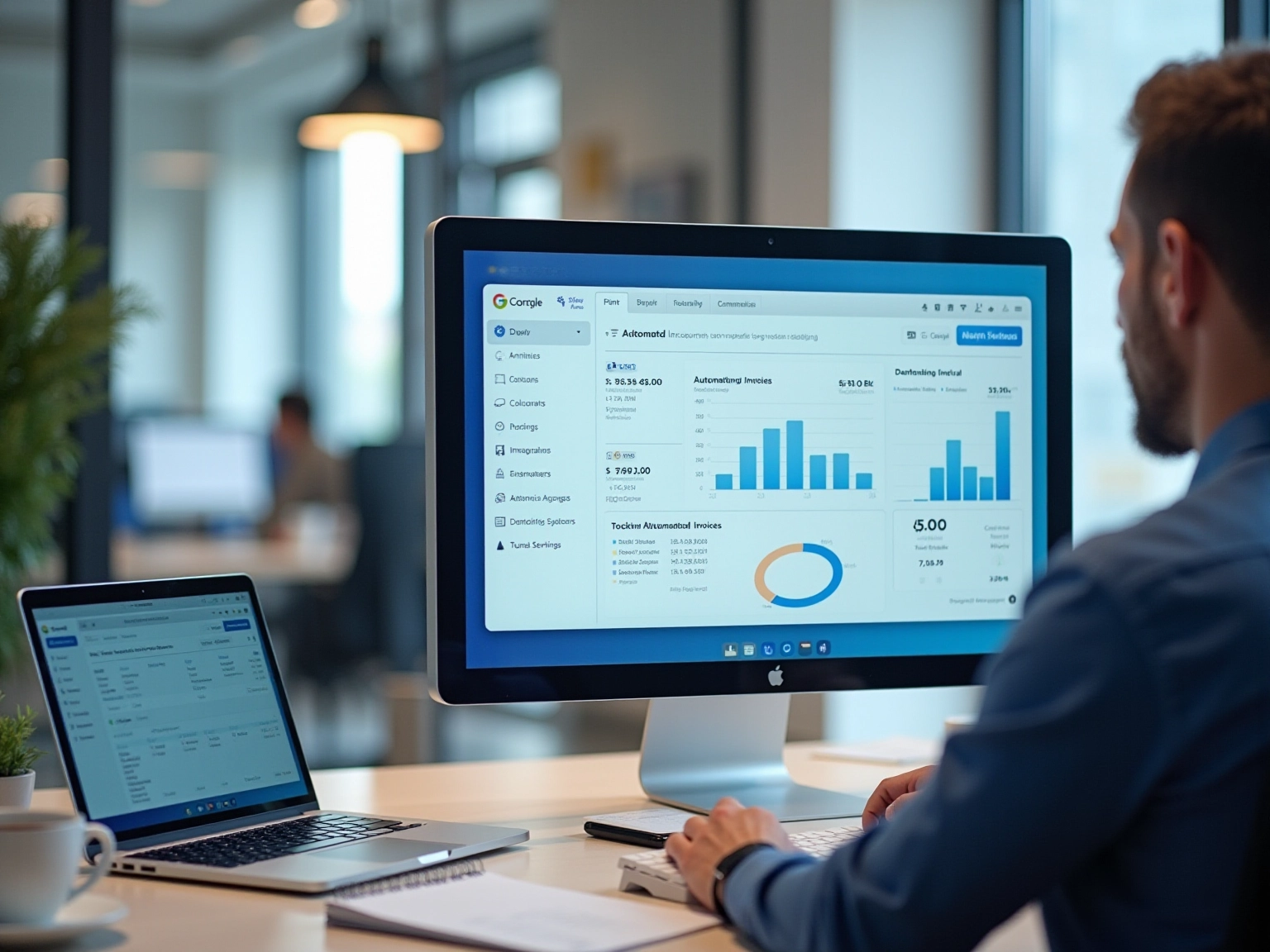
Special Considerations for Billing in IT Services
Charging for IT services presents distinct challenges, particularly due to variable pricing models and project-based payment structures. Accountants must ensure that invoices accurately reflect the services provided, detailing hours worked, project milestones, and any additional expenses incurred. Clear communication with customers about the billing process and payment conditions is crucial to avoid conflicts and confusion.
To manage these intricacies, utilising specialised invoicing software such as Glasscubes can be transformative. Glasscubes not only automates calculations but also enhances transparency in reporting, allowing for real-time updates on billing statuses. Its secure, encrypted, and GDPR-compliant platform fosters trust in user interactions, alleviating the discomfort frequently linked to delayed information and cost discussions.
The well-structured list feature of Glasscubes clearly outlines pending items and associated queries, which helps in reducing response times and fosters trust with clients. Automating accounts payable tasks can greatly lower expenses and enhance efficiency, tackling the challenges encountered by over 378,750 accounts payable specialists working in the United States, many of whom devote excessive time to manual data entry and invoice handling.
Best practices for the billing process in project-based invoicing in accounting include:
- Setting clear payment guidelines from the start
- Using detailed reports to monitor project advancement
- Applying Glasscubes’ automated reminder feature for payment deadlines
The basic option allows accountants to send up to 10 reminders on a simple schedule, while advanced options enable sending an unlimited number of reminders with any frequency or on specific days of the year. Accountants can also tailor the messages for each reminder, indicating greater urgency to meet upcoming deadlines, ensuring customers are informed and involved throughout the financial dealings.
These approaches not only simplify the invoicing system but also enhance customer satisfaction by offering a clear comprehension of expenses and timelines. As noted by Sophie Montgomery from TaxAssist Accountants, effective practices can lead to substantial time savings, with reports of 288 hours saved in just one tax season. By adopting these practices and utilising Glasscubes, financial professionals can effectively handle the unique challenges related to charging for IT services, ensuring timely payments and fostering stronger relationships with customers.
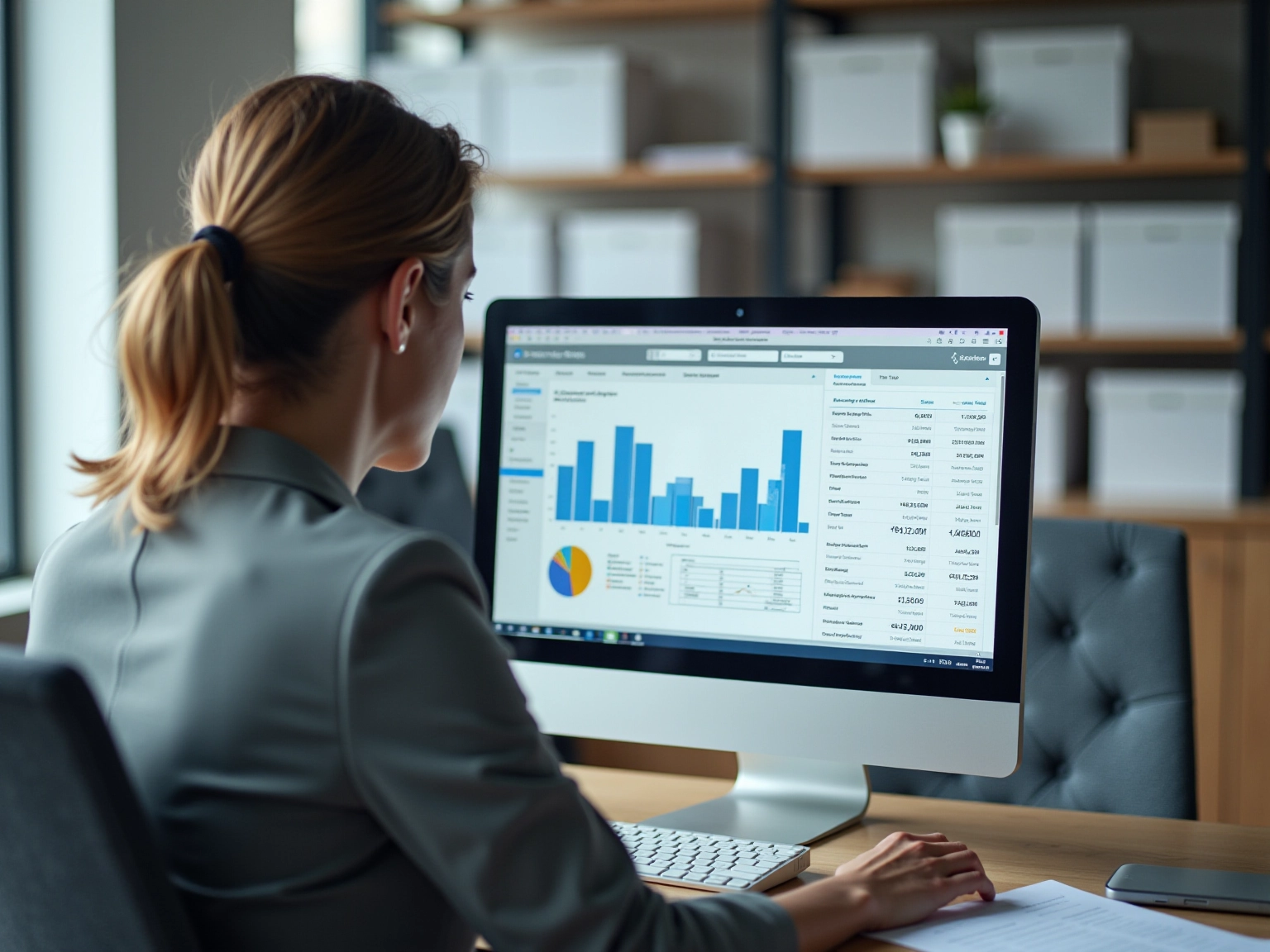
Benefits of Automating the Billing Process
Automating the invoicing system delivers significant advantages, particularly for financial professionals striving to enhance operational effectiveness and precision. By integrating automated systems, firms can generate invoices based on predefined criteria, dispatch timely reminders for overdue payments, and monitor payment statuses without manual intervention. This streamlined approach not only conserves valuable time but also empowers financial professionals to focus on more strategic activities, such as financial analysis and fostering client relationships.
A primary challenge faced by accounting firms is the inefficiency of outdated invoicing processes. Automation addresses these issues by modernising workflows and diminishing the time spent on repetitive tasks. The effect of automation on cash flow is especially noteworthy.
By reducing the time allocated to invoicing tasks, accountants can accelerate the collection of payments, thereby improving cash flow management. For instance, companies that have adopted automated solutions, such as Glasscubes, have reported an impressive 50% reduction in response times, facilitating quicker resolution of payment inquiries and faster payment cycles. Clients appreciate having a single secure workspace where they can effortlessly access information and inquiries, leading to a more organised and efficient billing process.
Moreover, automation significantly enhances invoicing precision by minimising the risk of human error. This guarantees that the billing process generates invoices that are not only accurate but also compliant with relevant regulations, thus decreasing the likelihood of disputes and bolstering client trust. A case study featuring VoiceNEXT illustrates this effectively; prior to adopting the OneBill automated invoicing platform, VoiceNEXT encountered labour-intensive manual procedures that hindered their operational efficiency.
Following implementation, the company witnessed a dramatic decline in invoicing tasks and time consumption, effectively halving their operational workload.
Expert opinions further underscore the benefits of automation in invoicing systems. Christopher Turli, Operations Manager at VoiceNEXT, stated, “OneBill has proven to be a game-changer for us, reducing our invoicing tasks and time consumption by fifty percent.” This sentiment resonates throughout the industry, with numerous companies acknowledging that automation not only streamlines operations but also fosters a more structured and efficient invoicing system.
In conclusion, the benefits of automating the billing process are evident: increased efficiency, enhanced accuracy, and improved cash flow management. By embracing automation, financial professionals can transform their invoicing practices, ultimately leading to heightened customer satisfaction and a more efficient work environment. Furthermore, tools such as Glasscubes offer unique advantages in this context, providing a comprehensive solution that aligns with the needs of modern accounting firms, enhancing engagement through streamlined communication and improved response times.
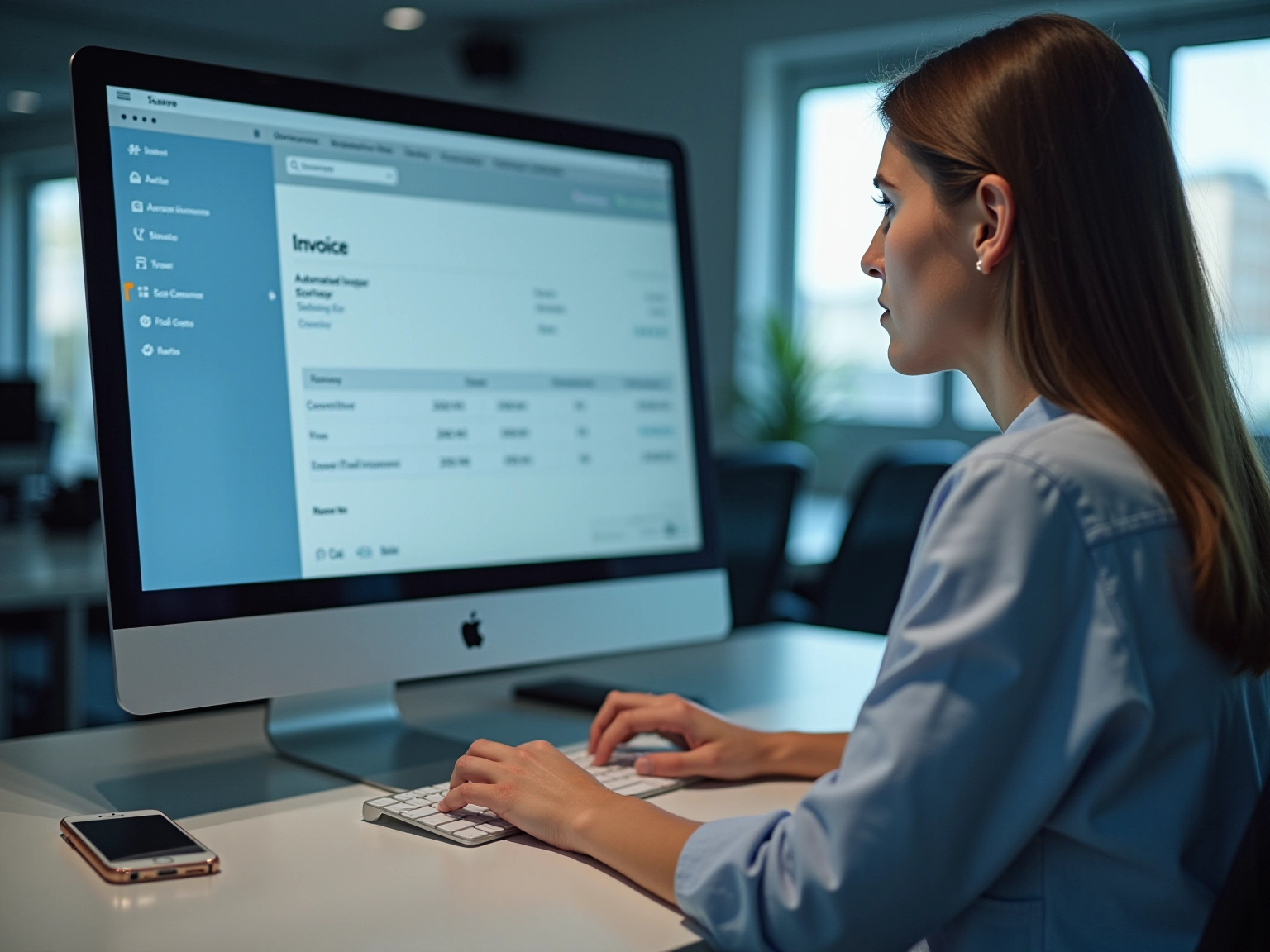
Common Pitfalls in Billing and How to Avoid Them
Frequent mistakes in the invoicing procedure can significantly obstruct a financial professional’s productivity and customer satisfaction. Inaccuracies in invoices, delays in sending them, and insufficient follow-up on payments are prevalent issues that lead to payment delays and strained client relationships. A staggering 39% of invoices contain mistakes, according to a survey by the Institute of Finance and Management, underscoring the urgent need for precision in invoicing practices.
The challenging nature of the finance profession is evident, especially during peak seasons when professionals at the Big 4 often work seven days a week. This reality highlights the critical importance of efficient invoicing methods to manage workloads effectively.
To alleviate these challenges, accountants should adopt a systematic approach to invoicing. This involves conducting regular assessments of payment details to identify and rectify errors before invoices are dispatched. Prompt invoice creation is crucial; delays can lead to cash flow issues and customer frustration.
Proactive communication with customers regarding payment expectations is equally vital, as it establishes clear timelines and reduces the likelihood of misunderstandings.
Implementing automated reminders, such as those offered by Glasscubes, can further enhance the billing process. With customisable scheduling and messaging options, accountants can optimise billing by sending an unlimited number of reminders tailored to specific customer needs, ensuring that no invoices are overlooked and that payments are collected promptly. The basic reminder option allows for up to 10 reminders on a simple schedule, while advanced options offer unlimited reminders with any frequency or specific days of the year.
This not only improves overall efficiency but also enhances client engagement by keeping clients informed and accountable. For instance, addressing frequent data inaccuracies in invoicing—such as those arising from manual entry errors or miscommunication between departments—requires quality control measures and regular audits of invoicing systems. A case study on common reasons for data inaccuracies reveals that implementing these measures can significantly reduce errors.
By maintaining current and well-organised invoicing systems, financial professionals can further minimise the occurrence of errors. Additionally, utilising top software like QuickBooks, which is employed by 44% of small enterprises, can simplify invoicing tasks and enhance accuracy. In conclusion, by identifying and addressing these frequent challenges, and leveraging tools like Glasscubes for automated reminders, financial professionals can streamline their invoicing systems, boost customer satisfaction, and ultimately enhance their practice’s financial well-being.
Navigating Legal E-Billing: Best Practices
Legal e-billing represents a pivotal shift toward the electronic submission and management of invoices for legal services, an increasingly vital practice within the accounting sector. Adhering to client payment guidelines is essential, as it not only fosters trust but also enhances operational efficiency. Notably, recent statistics reveal that 24% of law firms currently utilise client-facing online portals, with an additional 11% planning to adopt such technologies.
This trend underscores the growing importance of digital solutions in the billing process, which financial professionals must embrace.
To ensure compliance, accountants must maintain meticulous records of billable hours and provide clear, detailed descriptions of services rendered. This transparency is crucial for building strong customer relationships and minimising disputes over invoices. By leveraging e-billing software like Glasscubes, accountants can easily track invoices and payments, ensuring that all billing activities remain accessible and transparent.
Glasscubes significantly enhances customer engagement through automated communication and information-gathering tools, drastically reducing response times and improving overall efficiency. For example, Sophie Montgomery of TaxAssist Accountants reported an impressive 288 hours saved in just one tax season by implementing efficient e-billing practices, showcasing the substantial time-saving benefits available to financial professionals.
Moreover, Glasscubes offers functionalities such as automated reminders that prompt customers for missing information and a real-time visual progress report that enables accountants to clearly view outstanding requests or inquiries. Regular audits of invoicing practices are vital for identifying areas for improvement and ensuring adherence to legal standards. A case study titled “Implementing eBilling: Tips for Success” highlights the importance of assessing needs, selecting the right partner, and ensuring comprehensive team training.
By adhering to these best practices, legal departments can significantly enhance efficiency and compliance in managing legal expenses, ultimately improving the billing process and aligning with the industry’s digital future.
Furthermore, professional insights indicate that compliance with customer invoicing guidelines is not merely a regulatory requirement but also a strategic advantage. Firms that prioritise compliance can anticipate improved management of legal spending and stronger relationships with external counsel. As the legal tech market continues to expand—projected to exceed $225 billion by 2027—embracing these best practices in legal e-billing, particularly through tools like Glasscubes, will be essential for firms striving to excel in a competitive landscape.
Integrating Billing with Accounting Software for Efficiency
Incorporating invoicing systems with accounting software is essential for enhancing operational efficiency within accounting practices. This integration facilitates seamless data transfer between systems, significantly reducing the need for manual entry and minimizing the potential for errors. Research indicates that 60% of business proprietors believe they lack adequate understanding of accounting and finance, highlighting the necessity for user-friendly systems such as Glasscubes that simplify procedures and address this knowledge gap.
With unified invoicing systems, financial professionals gain real-time updates on payment statuses, customer transactions, and financial reporting. Glasscubes enhances this immediacy by providing real-time visibility into request statuses and offering automated reminders, which not only improves billing efficiency but also fosters greater customer engagement. The automated reminder feature allows accountants to send an unlimited number of notifications on a customizable schedule, ensuring that customers are promptly informed about outstanding information or deadlines.
This capability significantly reduces the time spent on follow-ups and enhances communication, as customers can easily see what information is still required. Moreover, a testimonial from Steve, an audit manager at MGI, illustrates how Glasscubes has transformed their audit process. He noted that the platform has simplified communication, enabling users to upload information more swiftly than through conventional email methods. This transparency has led to quicker responses and a more organized workflow, as all necessary information is consolidated in one secure location.
Such enhancements reflect the advantages provided by integrated invoicing systems, which simplify customer interactions and enhance the billing process by decreasing the time allocated for follow-ups. Furthermore, professional insights underscore the importance of minimizing manual input in invoicing. By combining invoicing with accounting software, firms can significantly reduce the chances of errors, thereby improving accuracy and dependability in financial reporting.
As Sophie Montgomery from TaxAssist Accountants observed, firms utilizing effective systems like Glasscubes can report substantial time savings, with one user noting an impressive 288 hours saved in just one tax season. As we approach 2025, the benefits of such integration, supported by dedicated onboarding assistance from Glasscubes, will only become more pronounced, making it a critical consideration for accounting firms striving to enhance their operational efficiency and client satisfaction.
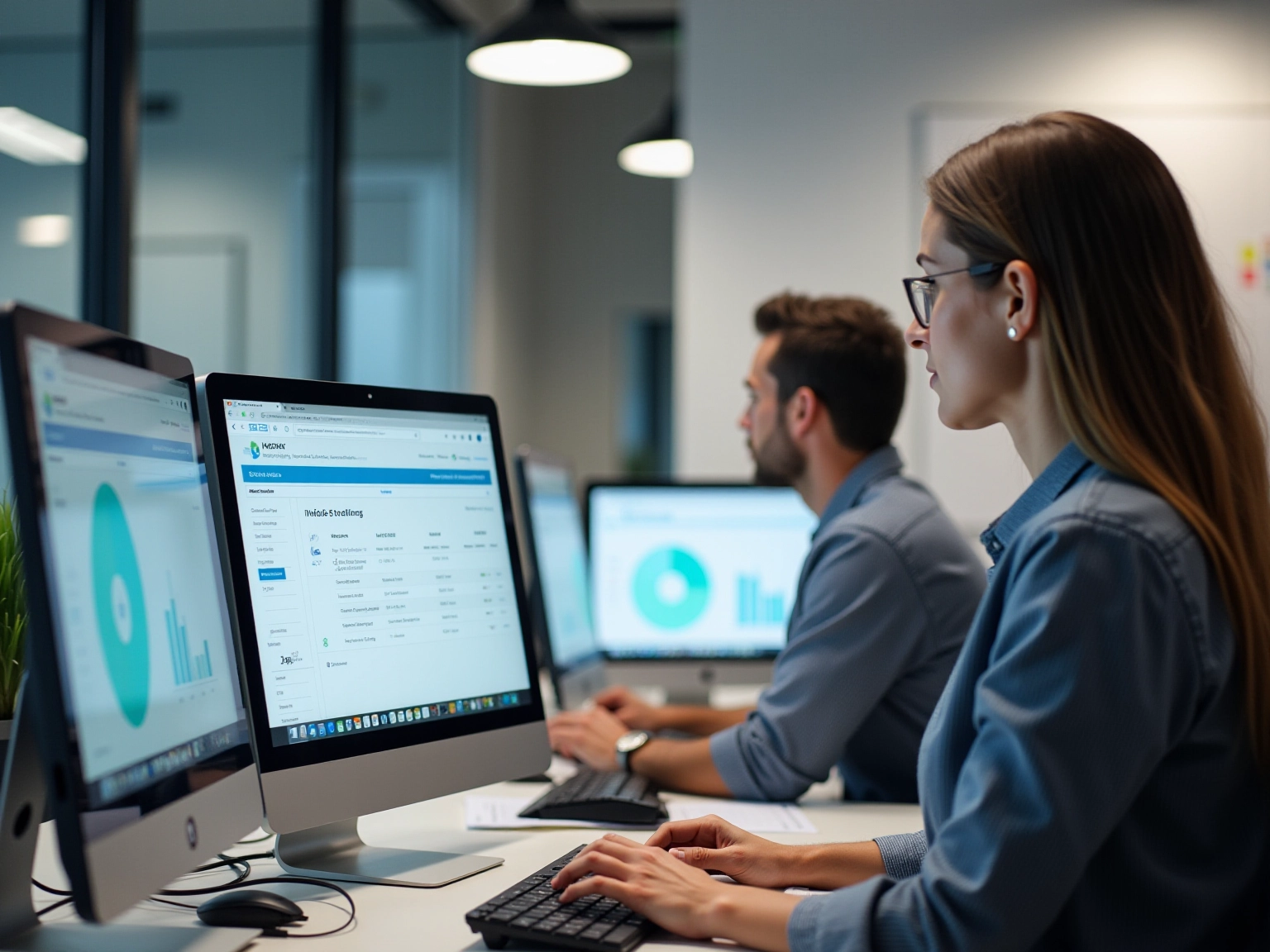
Future Trends in Billing Processes for Accountants
The future of invoicing methods for financial professionals is poised for significant transformation, driven by advancements in technology, particularly in artificial intelligence (AI), machine learning, and blockchain. These innovations are set to enhance automation, improve accuracy, and streamline the entire invoicing cycle, making it more efficient than ever. Notably, a substantial 41% of companies have already automated their invoice approval processes, underscoring a growing trend toward efficiency in accounts payable.
As we approach 2025, the emergence of subscription-based services and usage-based payment models will necessitate a shift in strategies for accountants. Adapting to these models is crucial for maintaining competitive advantages and meeting evolving client expectations in an increasingly digital landscape. In fact, 75% of finance leaders are either contemplating or have already integrated virtual card payments, indicating a broader trend toward digital payment solutions.
Furthermore, the incorporation of AI and machine learning into invoicing processes is expected to revolutionise efficiency. According to industry insights, 66% of financial professionals are prepared to invest in AI, with 55% planning to implement it within the next three years, as highlighted in the Sage Practice of Now 2018 Report. This reflects a strong belief in AI’s potential to enhance invoicing practices.
The market for accounts payable invoice automation software and supplier e-invoicing is projected to expand significantly, reaching nearly £1.75 billion by 2026, up from approximately £925 million in 2021, with a compound annual growth rate (CAGR) of 14%. This growth illustrates the increasing reliance on technology to simplify invoicing processes.
A practical example of this transformation can be observed with Glasscubes, a tool designed for UK accountants that enhances customer interaction and facilitates information collection. Glasscubes offers features such as automated communication tools and real-time reporting capabilities, which significantly improve the efficiency of invoicing processes. Users of Glasscubes, including TaxAssist Accountants, have reported considerable time savings, with one user saving 288 hours in a tax season and firms experiencing a 40% increase in customer response rates.
These results demonstrate how specific tools can drive efficiency improvements in the billing process. In conclusion, the future of billing for accountants will be characterised by a fusion of advanced technologies and innovative billing models. Embracing these changes, along with leveraging tools like Glasscubes, will not only enhance operational efficiency but also improve client satisfaction, positioning firms for success in a rapidly evolving financial landscape.
Conclusion
The billing process is crucial to the success of accounting practices, directly influencing financial stability and client relationships. By mastering the structured methodology of invoicing—from gathering accurate information to tracking payment statuses—accountants can greatly enhance their operational efficiency. Embracing automation through tools like Glasscubes not only streamlines workflows but also minimizes human error, effectively addressing the common pitfalls that can lead to delayed payments and frustrated clients.
As the landscape of billing evolves, the integration of advanced technologies, such as AI and machine learning, will undoubtedly shape the future of accounting practices. With an increasing emphasis on digital solutions, accountants must adapt by adopting innovative billing models and automated systems that foster transparency and improve cash flow management. The shift towards subscription-based and usage-based billing clearly indicates that staying ahead of these trends is essential for maintaining a competitive edge.
Ultimately, the journey toward an efficient billing process transcends mere administrative burden reduction; it is about cultivating stronger relationships with clients and ensuring the long-term financial health of firms. By prioritizing automation, maintaining accurate records, and leveraging modern technology, accountants can transform their billing practices, paving the way for sustainable growth and enhanced client satisfaction in an increasingly digital world.
